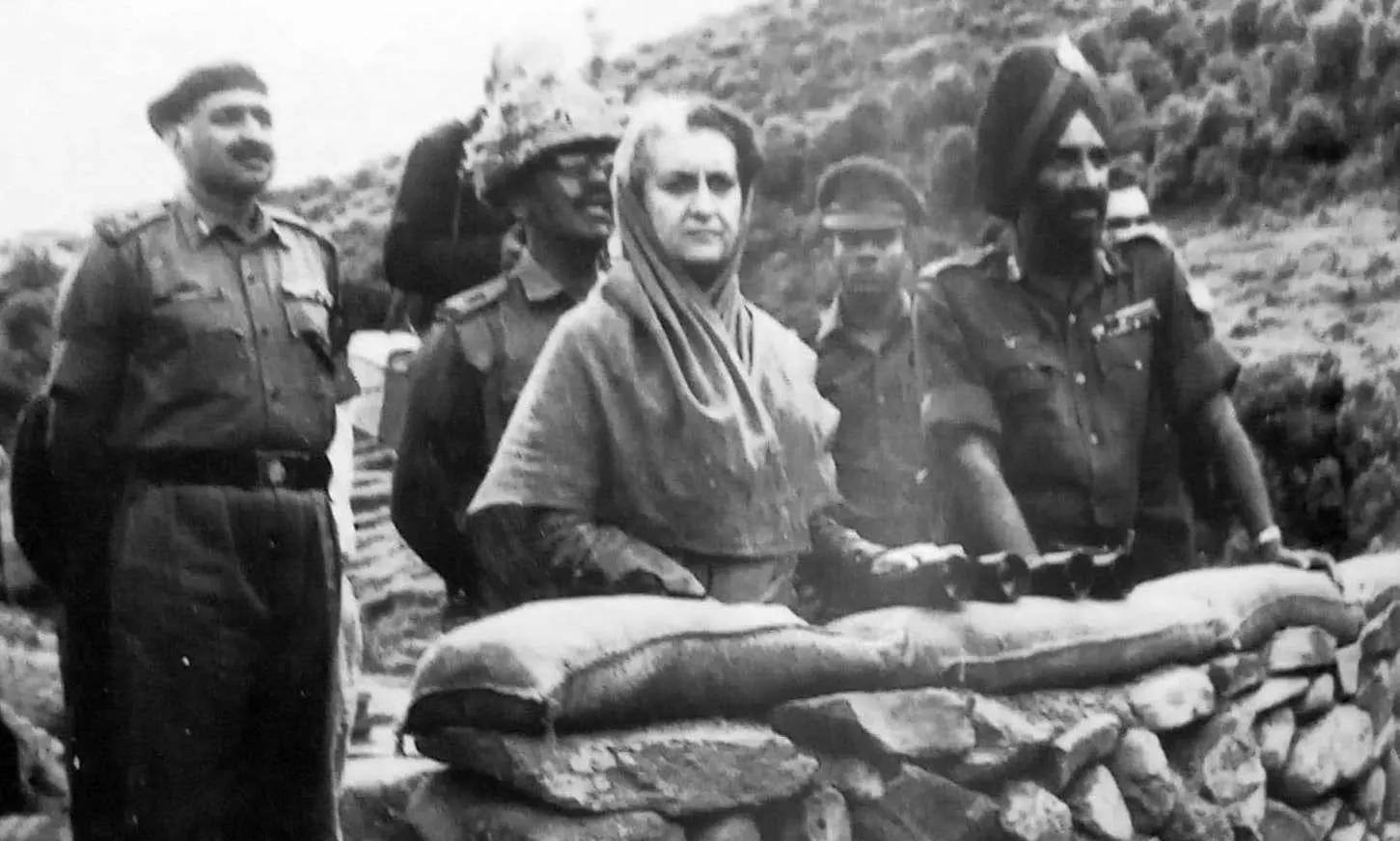
Revisiting 1971: Leadership lessons for a stronger India
text_fieldsIndira Gandhi visiting the forward areas during the Indo-Pakistani War of 1971, a conflict that led to India’s military victory and the creation of Bangladesh.
When history is altered or reinterpreted, the true essence of it is never truly erased. This is the eternal nature of history—especially war history—it endures in collective memory, finding its way back through recognition and remembrance. Recalling former Prime Minister Indira Gandhi in the context of the military operation against the Pahalgam terrorist attack is far more than a political gesture; it is a journey back to reality, a recognition of decisive leadership in times of crisis.
Throughout world history, comparisons have served as powerful tools to understand the depth of leadership and the impact of governance. For example, the political strategies of Abraham Lincoln during the American Civil War are often compared with those of Franklin D. Roosevelt during World War II. Both leaders faced existential threats to their nations—one from internal division and the other from global conflict. Despite the eras being vastly different, the strength of their leadership, their ability to unite fractured societies, and their vision for reconstruction have been subjects of study for decades.
In the Indian context, the leadership of Indira Gandhi during the 1971 Bangladesh Liberation War is a remarkable example of strategic clarity and decisive action. Faced with a massive refugee crisis and mounting international pressure, Indira Gandhi not only managed the humanitarian challenge but also led India to a decisive military victory that reshaped the geopolitical landscape of South Asia. Her bold decision to stand firm against U.S. pressure, symbolised by the infamous Nixon-Kissinger tilt towards Pakistan, showcased India’s resolve and strategic independence. When it comes to India’s spirit of determination and sovereignty, few moments in history shine as brightly as Indira Gandhi’s resolute stand against the United States. In the face of America’s decision to send the Seventh Fleet in support of Pakistan during the 1971 war, Indira Gandhi’s response was unyielding and fearless. She made it clear that any violation of India’s maritime borders would be met with unwavering resistance—no one would be spared.This bold defiance was not just a statement of strength; it was a declaration of India’s uncompromising independence on the global stage.
The world first learned about the ceasefire between India and Pakistan during Operation Sindoor when it was announced by US President Donald Trump. This surprising revelation fuelled suspicions that the Indian government may have succumbed to US pressure. In this context, memories of Indira Gandhi’s decisive stand during the 1971 war resurfaced, sparking widespread discussion on social media. Her unyielding defiance against global superpowers became a symbol of India’s sovereignty and strength.
Further, the leadership during the Cold War is often scrutinised to understand how diplomatic manoeuvring and strategic alliances prevented global catastrophe. The tenures of Leaders like John F. Kennedy, Nikita Khrushchev, and Ronald Reagan are studied for their crisis management during tense standoffs like the Cuban Missile Crisis and the negotiations that led to the fall of the Berlin Wall. These comparisons across decades reveal the importance of strong, visionary leadership in preventing conflicts and steering the world toward peace.
When leaders today are evaluated against historical figures, it is not merely to criticise but to inspire. It is to ask: Are we standing as firm? Are we as clear in our vision? Are we as resilient in the face of pressure? These questions are not just rhetorical; they are necessary for progress.
The dismissal of historical comparison undermines the very foundation of reflective governance. It prevents us from learning how crises were handled, how diplomatic manoeuvring shaped outcomes, and how strategic alliances were forged in the face of adversity. To say that the present should not be viewed through the lens of the past is to ignore the principles of leadership that brought us here.
In today’s complex geopolitical ldscape, drawing comparisons with past leadership is not only valid but essential. For instance, in the wake of the Pahalgam terror attack, responding decisively to Pakistan requires strong political resolve, strategic clarity, and an unwavering commitment to national sovereignty. These qualities were exemplified by Indira Gandhi’s leadership during the 1971 war.
Reflecting on the strength and vision of past leaders is not merely an exercise in nostalgia—it is a source of inspiration and a benchmark for decisive action. Understanding the legacy of leaders like Indira Gandhi helps frame what true political courage and strategic foresight should look like in the face of adversity.
(The author is the Middle East Convener of the Indian Overseas Congress)












